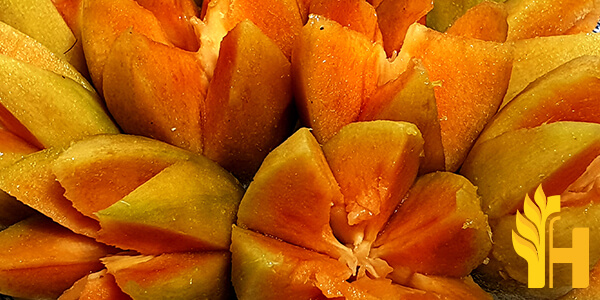Pouteria Sapota price

Where to buy and sell Pouteria Sapota, lowest (cheapest) and highest price.
check offers buy sell Pouteria SapotaToday price for Pouteria SapotaPouteria Sapota wholesale prices 2022
The Current commodity price of Pouteria Sapota per kg, pound in the world in the global markets
Pouteria Sapota
Mamey sapote is a fruit tree in the "Sapotaceae" family and member of the genus Pouteria. The mamey sapote tree belongs to the Sapotaceae (mapepire, chicle) family and is an evergreen that can grow up to 19.7 feet (6 meters) tall. It flowers from spring to summer and produces fruit from autumn to winter. The single-seeded, oblong fruit grows inside a smooth, green skin that turns as red as wine as the fruit ripens. Some varieties have light yellow or pink flesh, but all have a creamy consistency and a sweet flavor likened to coconut custard. A large tree, up to 18.3 m tall, with a very thick trunk and short branches bearing spirally arranged leaves. The bark is greyish brown, smooth or fissured on old trees; young shoots are velvety at first but later become glabrous. Leaves alternate, simple, entire, broadly elliptic to obovate, 8.9-17.8 cm long, glabrous above and tomentose below; petiole 1-4 cm long. Flowers are bisexual or unisexual, in racemes or panicles, showy but short-lived; calyx lobes 4-7, unequal, the upper 3 larger, 3-6 mm long, glabrous, the lower with short-clawed petals 4-7 mm long. Petals usually absent; stamens many (40), the filaments 0.5-1 cm long; anthers shortly 2-lobed at the base and dehiscing by pores. Ovary ovoid, 1-3-celled, with 2 ovules per cell. Fruit a fleshy berry, 3-9 cm long and 3-6 cm in diameter; ripe fruit is pink or yellowish red and very fragrant; seeds ovoid to reniform, 4.2-7.5 cm by 2.8-4 cm. The mamey sapote tree is native to southern Mexico, Central America and northern South America. It was introduced into the Philippines in the 1880s and has become widely naturalized there, especially along river banks in lowlands. It also occurs as an escape around abandoned houses and gardens throughout tropical Asia, Australia, Hawaii, Puerto Rico and the Virgin Islands. Mamey sapote trees are cultivated throughout tropical America. They grow easily in deep, moist soils of lowland forests but also thrive in many other kinds of tropical regions. The tree has escaped from cultivation in Hawaii and south Florida and has become a weed along stream banks and roadways (and sometimes overtopping other vegetation).Global pouteria sapota production
Pouteria sapota (chicle or nispero) is a tropical fruit tree native to Mexico and Central America. The tree grows to a height of 30 m (98 ft) and produces white latex when the bark is cut. Latex is used to make chewing gum and rubber. The fruit is oval-shaped and has brown or blackish-brown skin. The flesh is white, orange, or pink and has a sweet taste. Pouteria sapota is grown in tropical regions around the world. The tree is drought-resistant and can tolerate poor soils. It prefers full sun and high humidity. The main producers of Pouteria sapota are Mexico, Guatemala, Honduras, El Salvador, Nicaragua, Costa Rica, Panama, and Ecuador. Other countries that produce the fruit include Peru, Brazil, Colombia, Venezuela, Haiti, Dominican Republic, and Jamaica. In Mexico, Pouteria sapota is known as zapote blanco or nispero. In Central America, it is known as sapodilla or sapota. In South America, it is known as níspero. Pouteria sapota is a popular fruit in many tropical countries. It is often eaten fresh or made into juices, ice cream, and other desserts. Global production of Pouteria sapota was estimated to be 1.3 million metric tons in 2013. Mexico is the leading producer of fruit, followed by Guatemala, Honduras, and Ecuador. Pouteria sapota is a nutritious fruit that is rich in vitamins and minerals. It is an excellent source of dietary fiber and antioxidants. The fruit has numerous health benefits and can help prevent various diseases. Pouteria sapota is a versatile fruit that can be used in many different ways. It can be eaten fresh, juiced, or made into desserts. The fruit can also be used to make chewing gum and rubber. Pouteria sapota is a delicious fruit with many health benefits. It is an excellent source of dietary fiber and antioxidants. The fruit can help prevent various diseases and is a versatile ingredient that can be used in many different ways.Download our new
Husfarm App
Stay up to date with the current prieces of agricultural products all over the world.
Do you want to sell agricultural products?
Are you an Agricultural processor looking for high-quality products to buy?
Post an ad for FREE!
